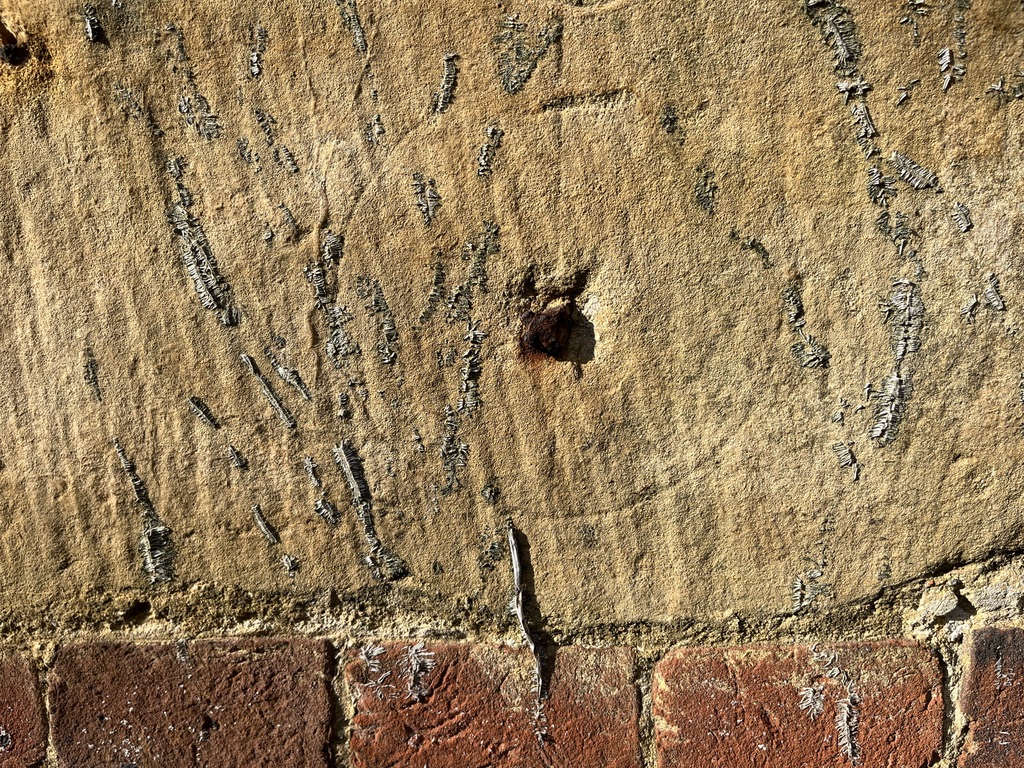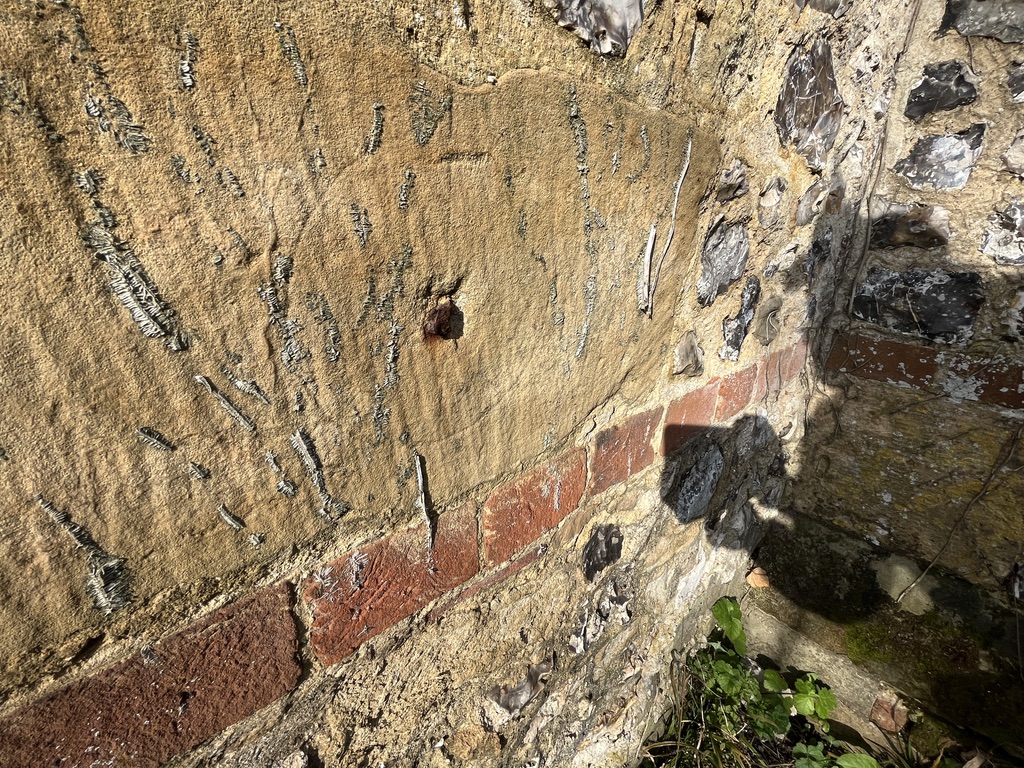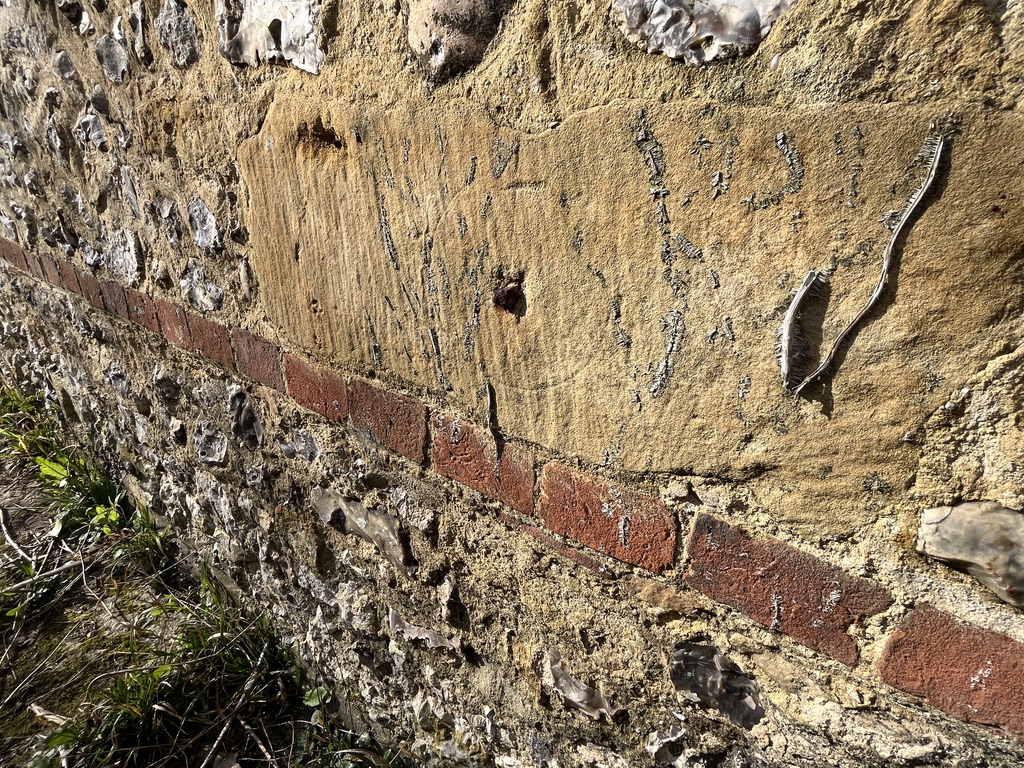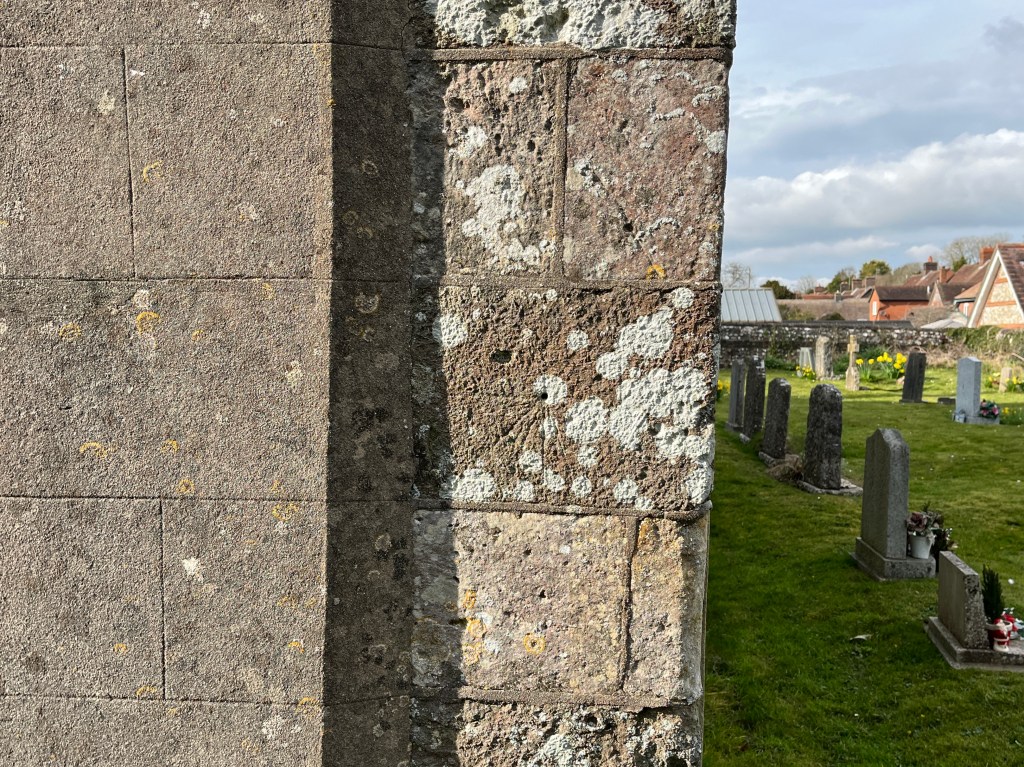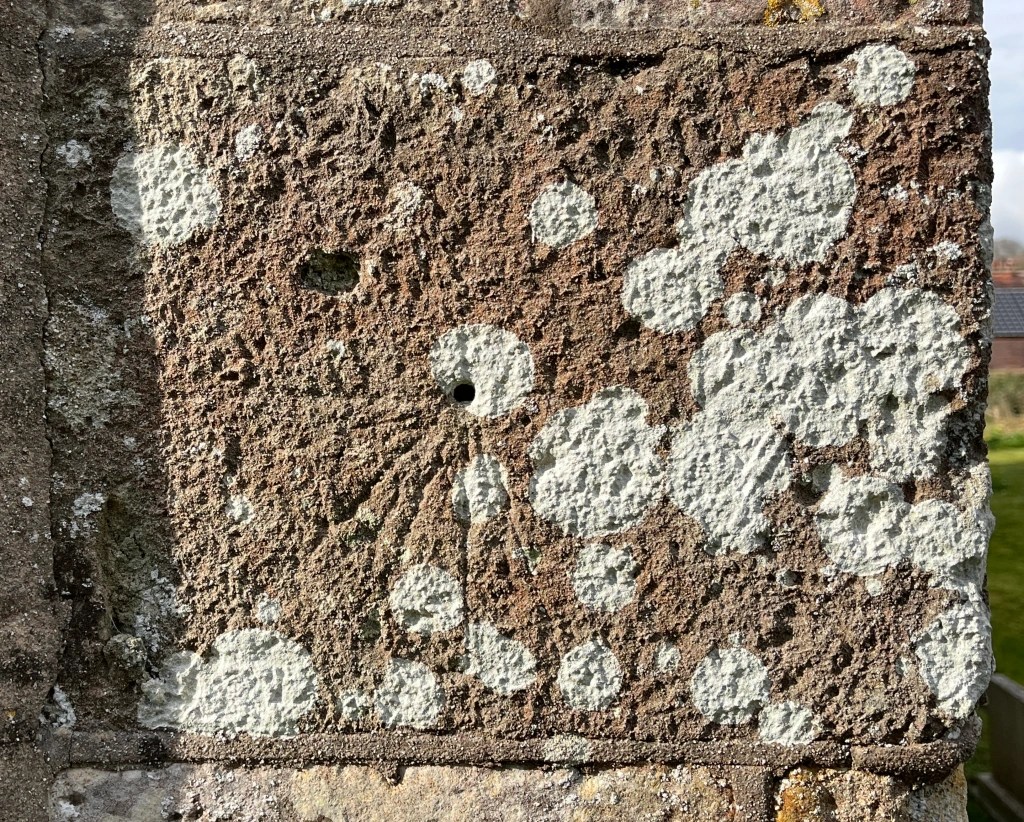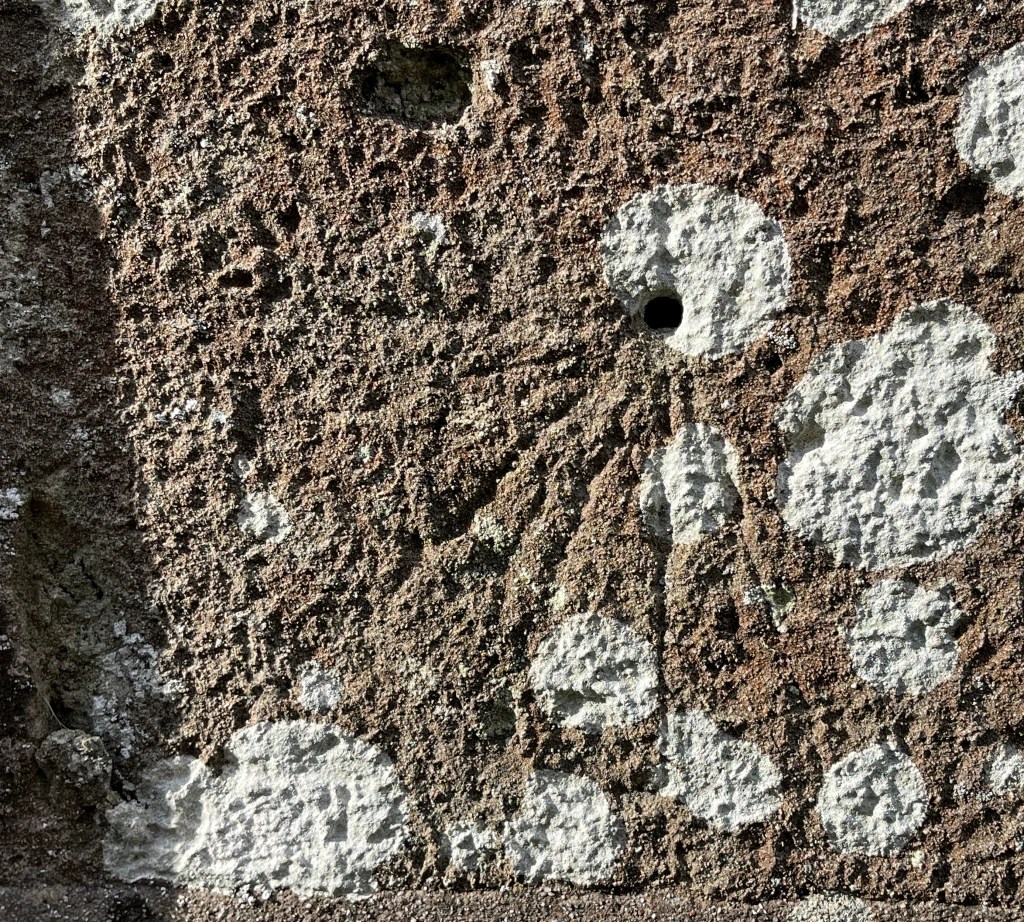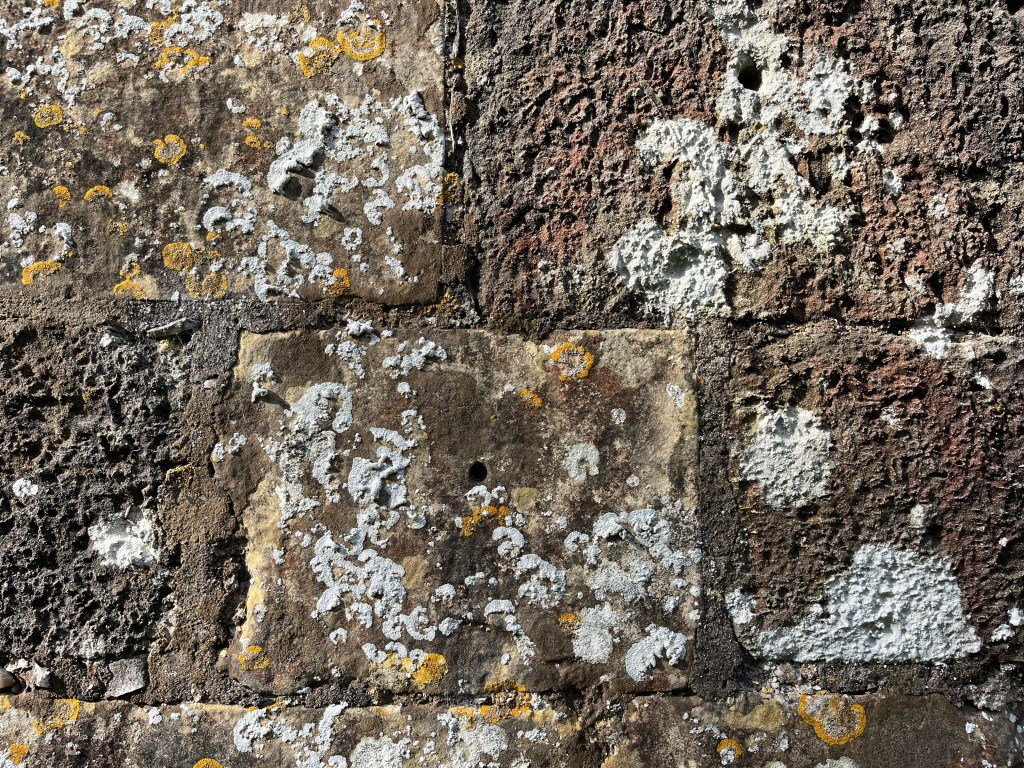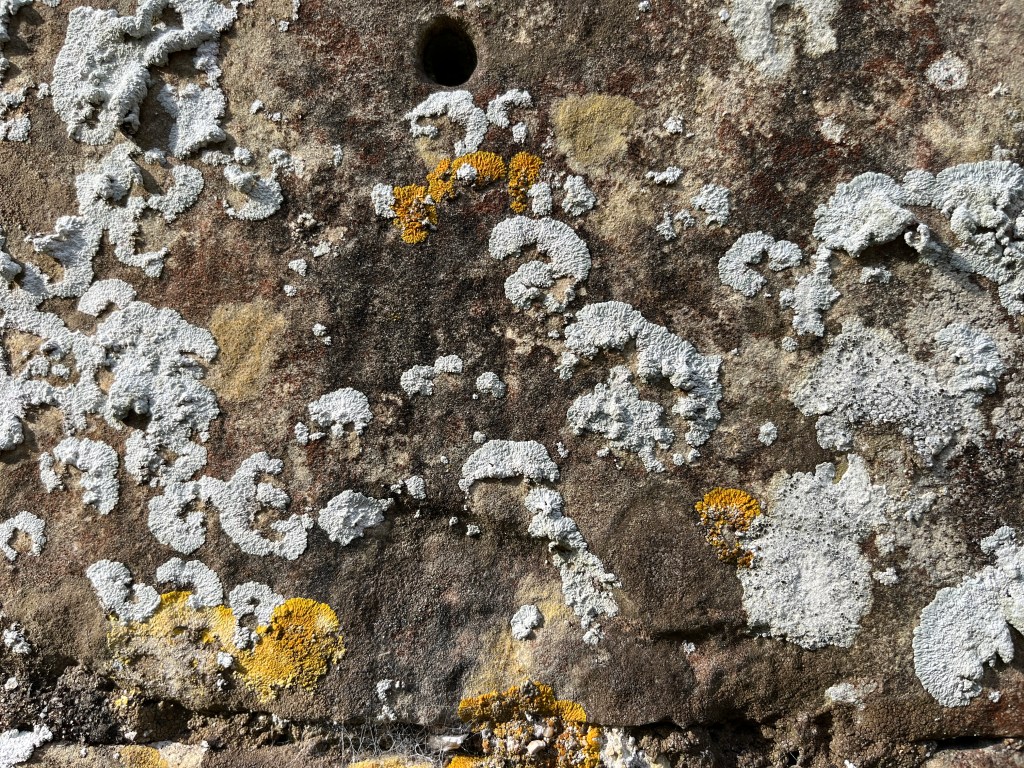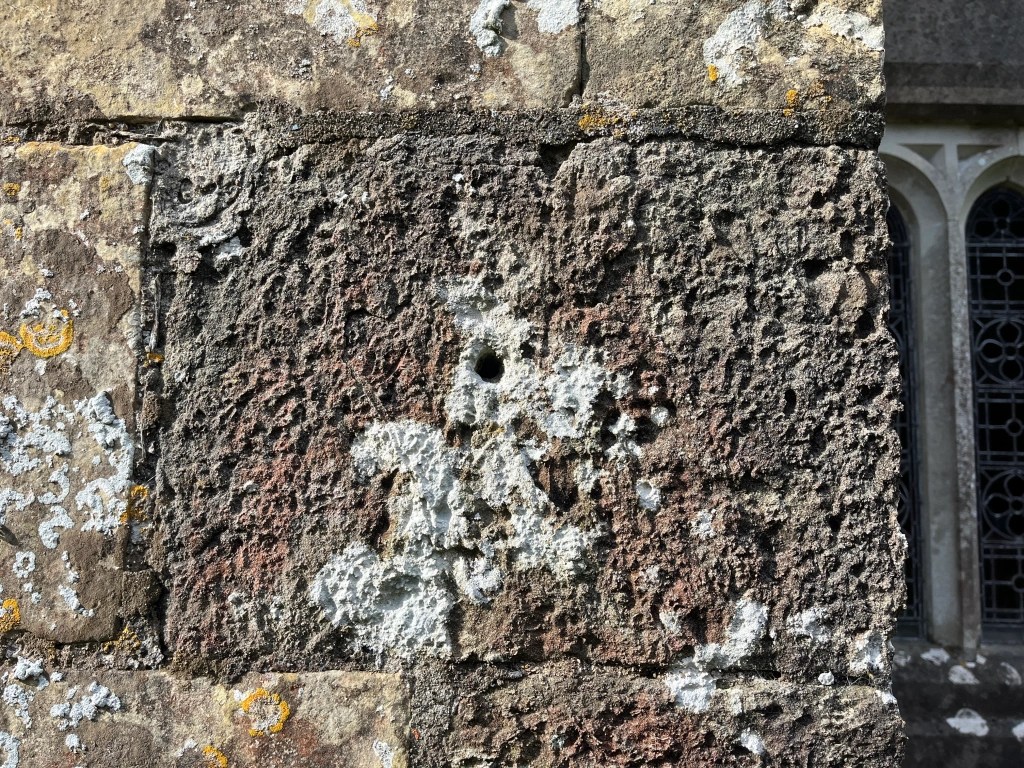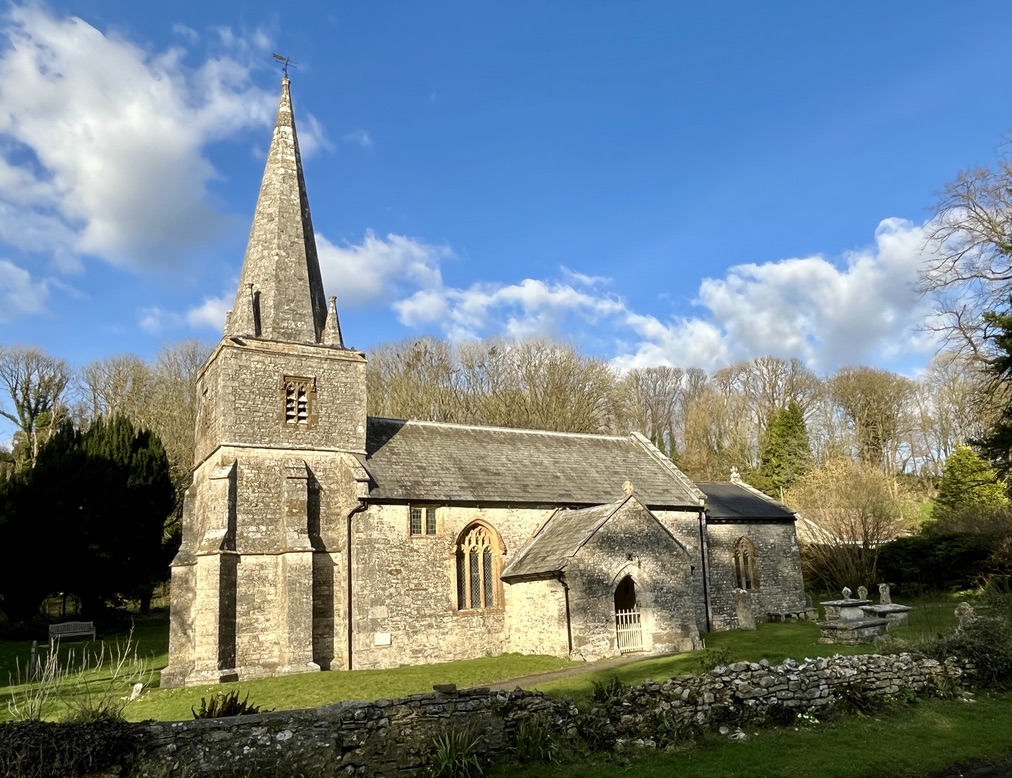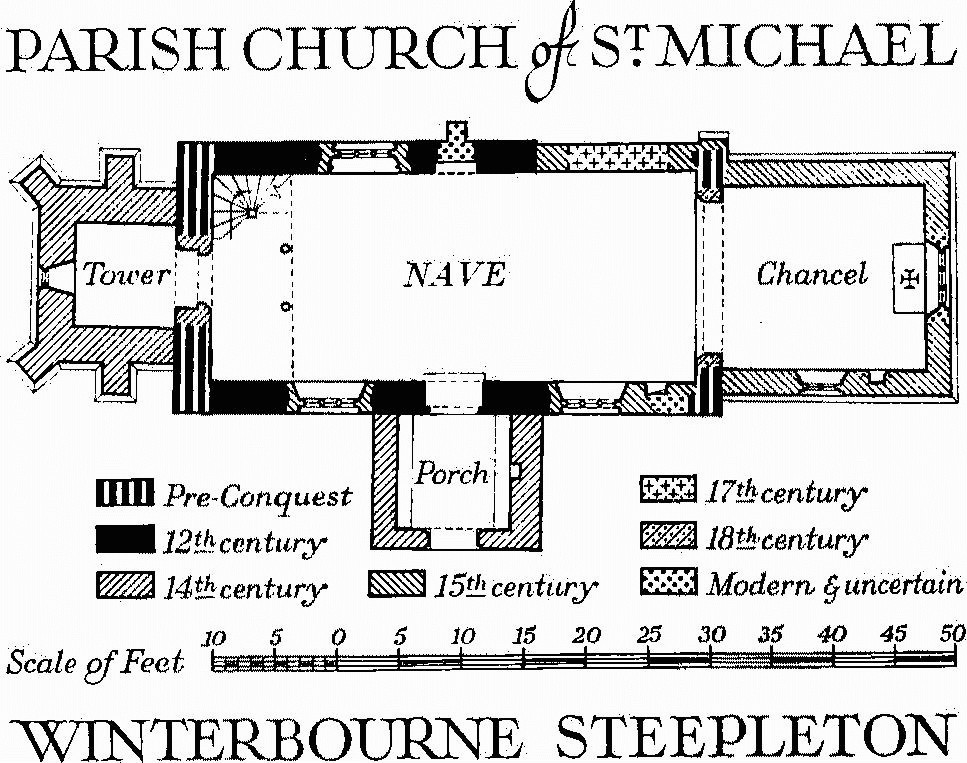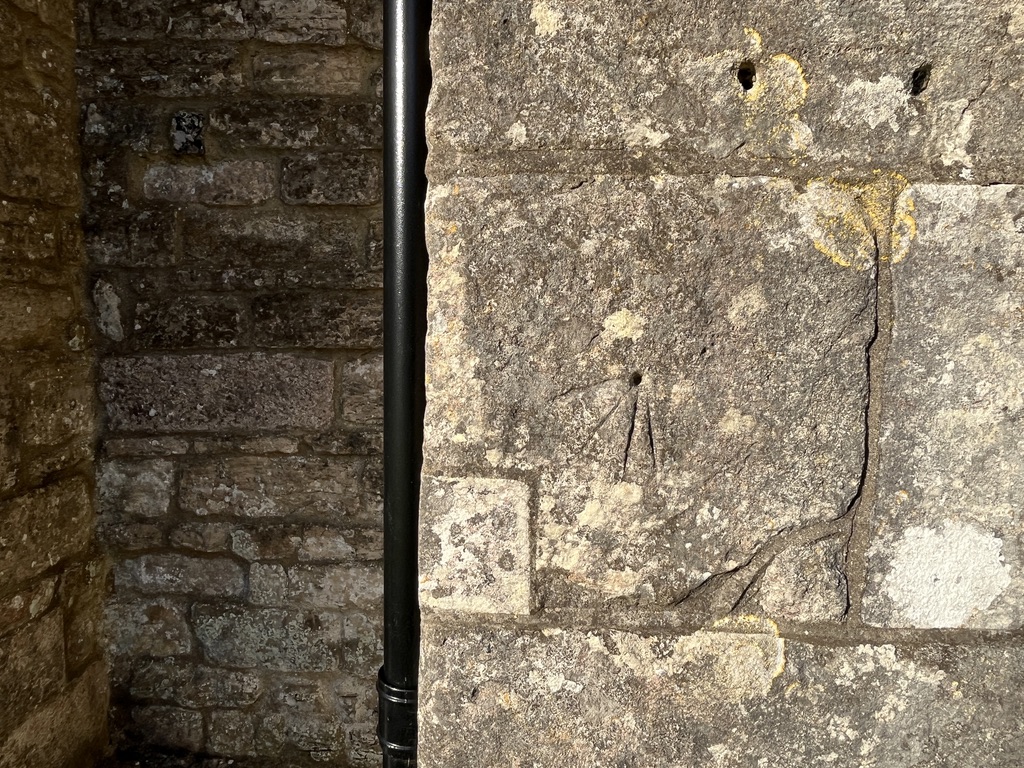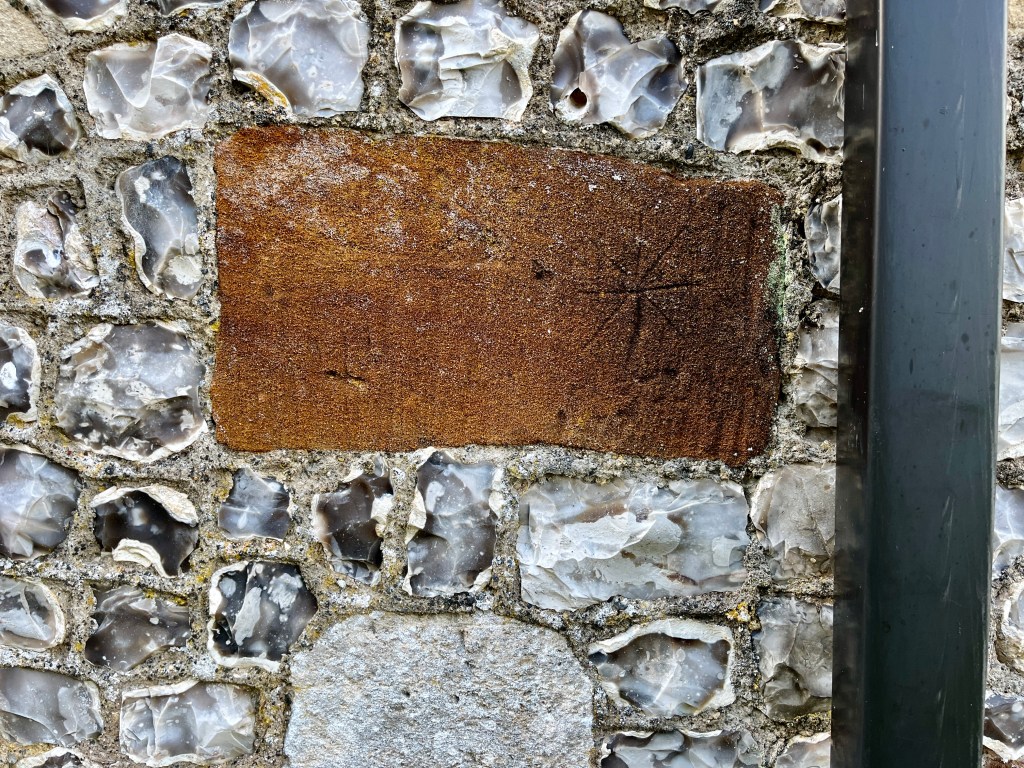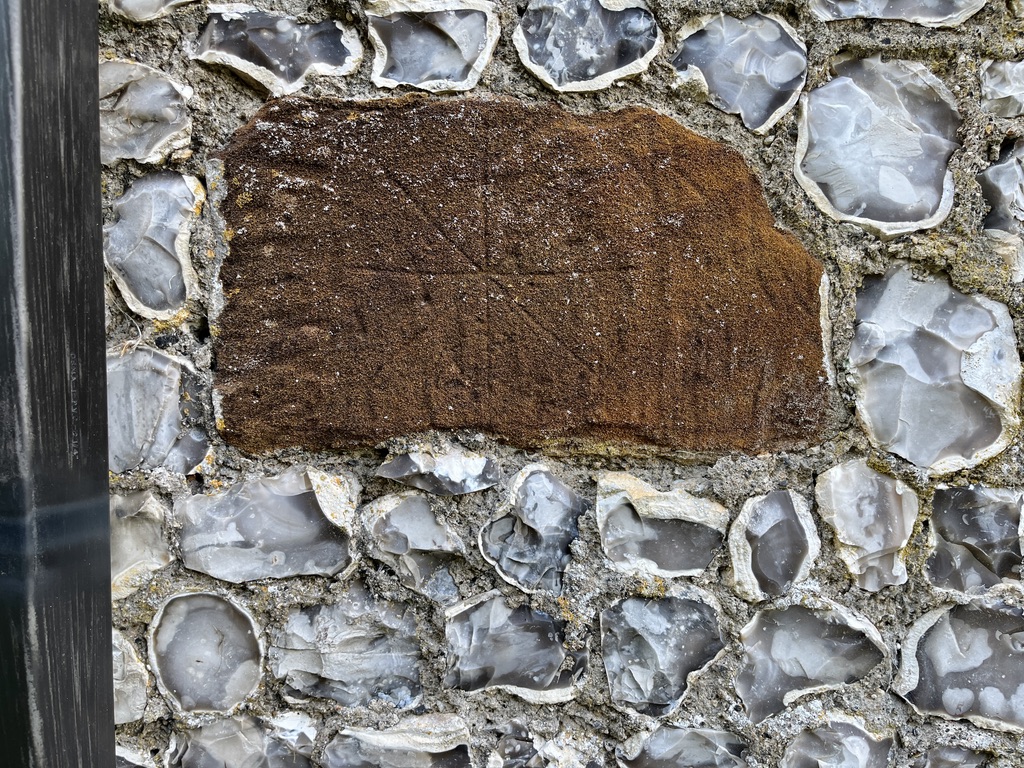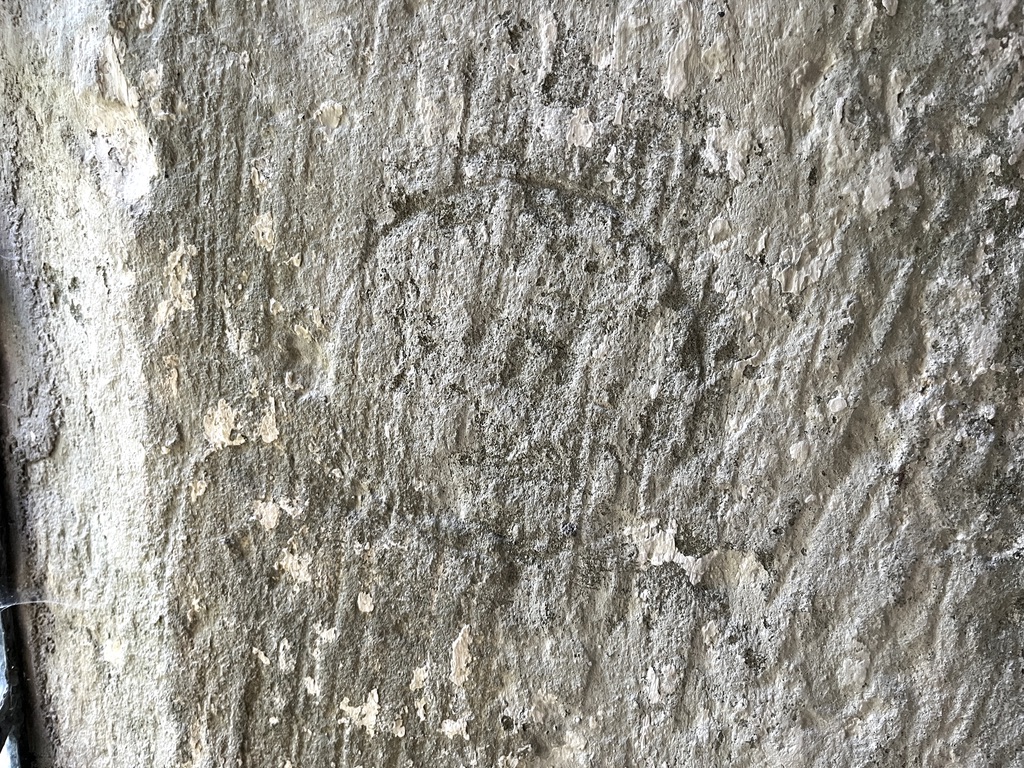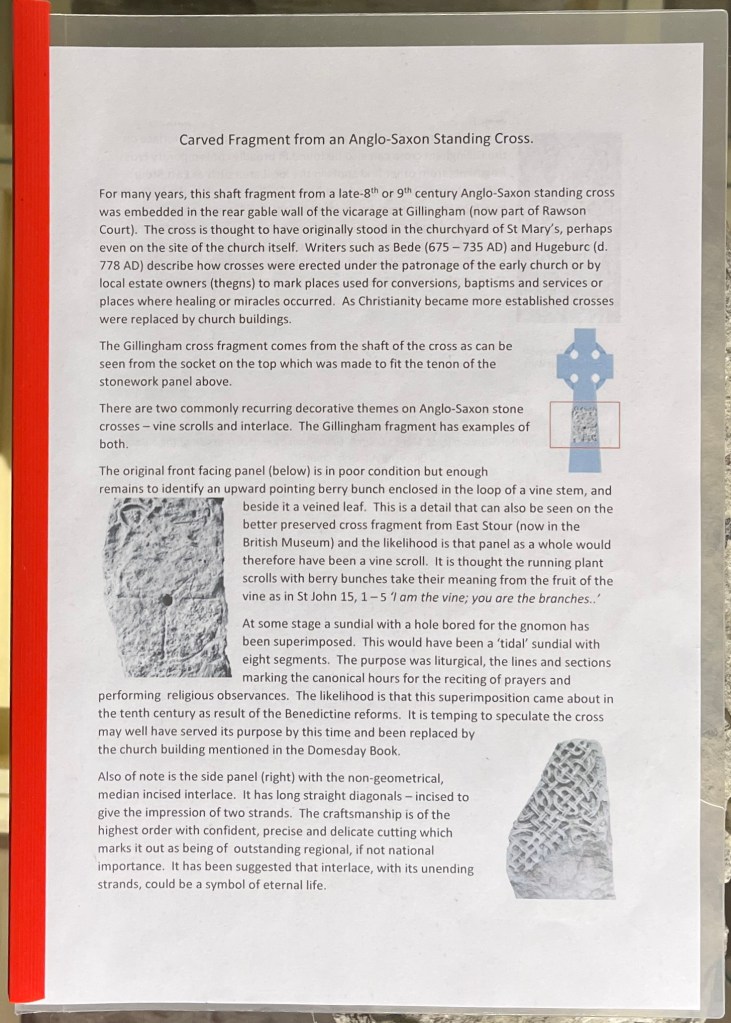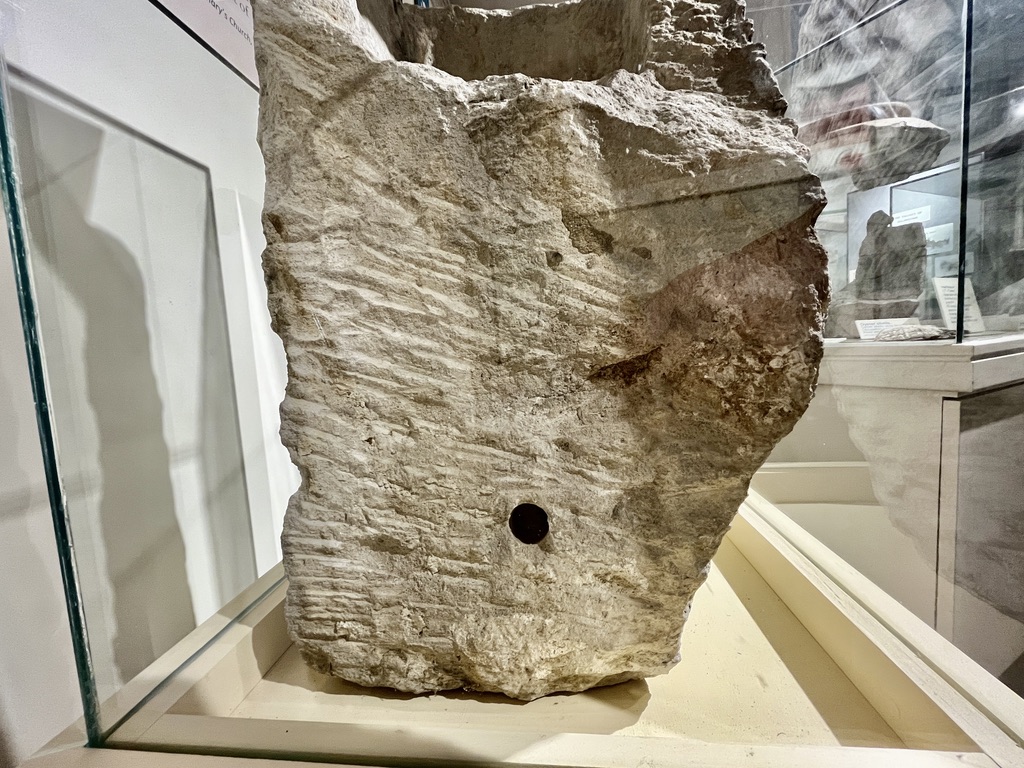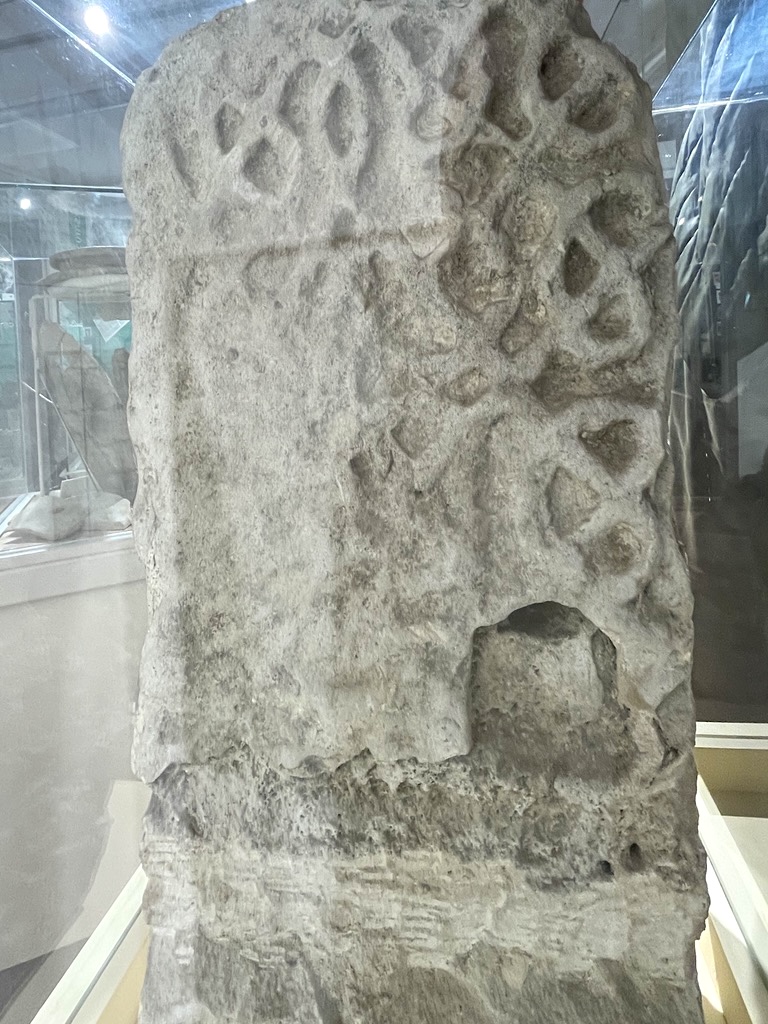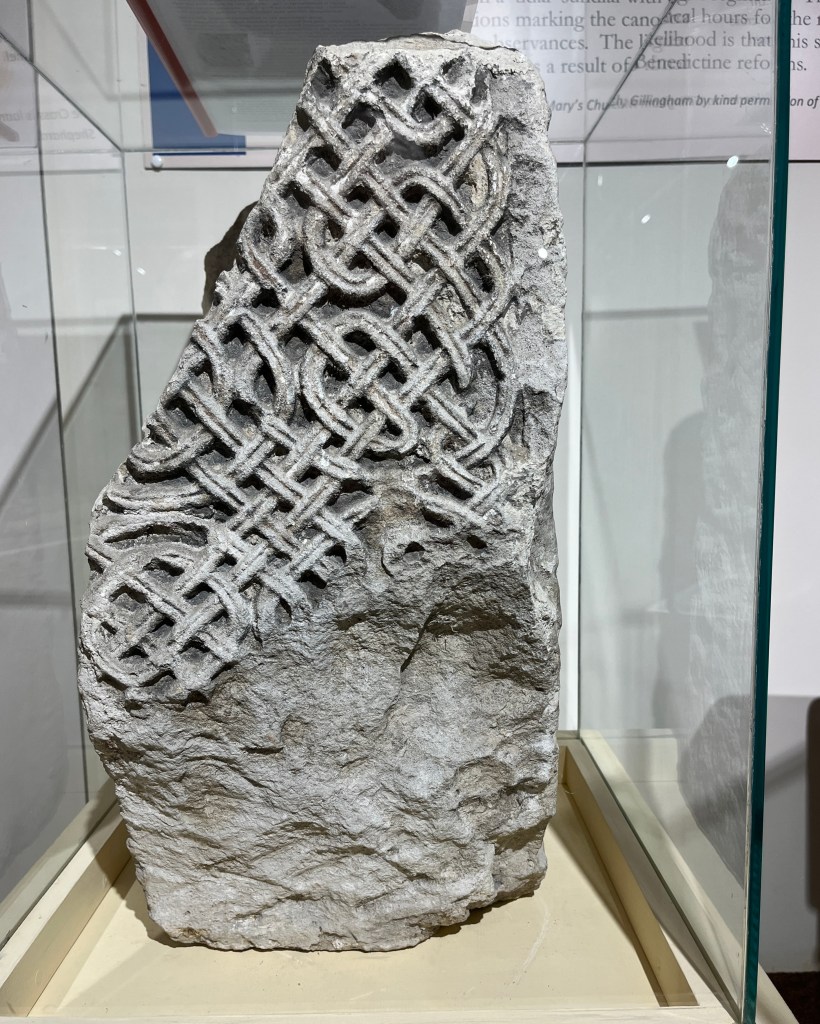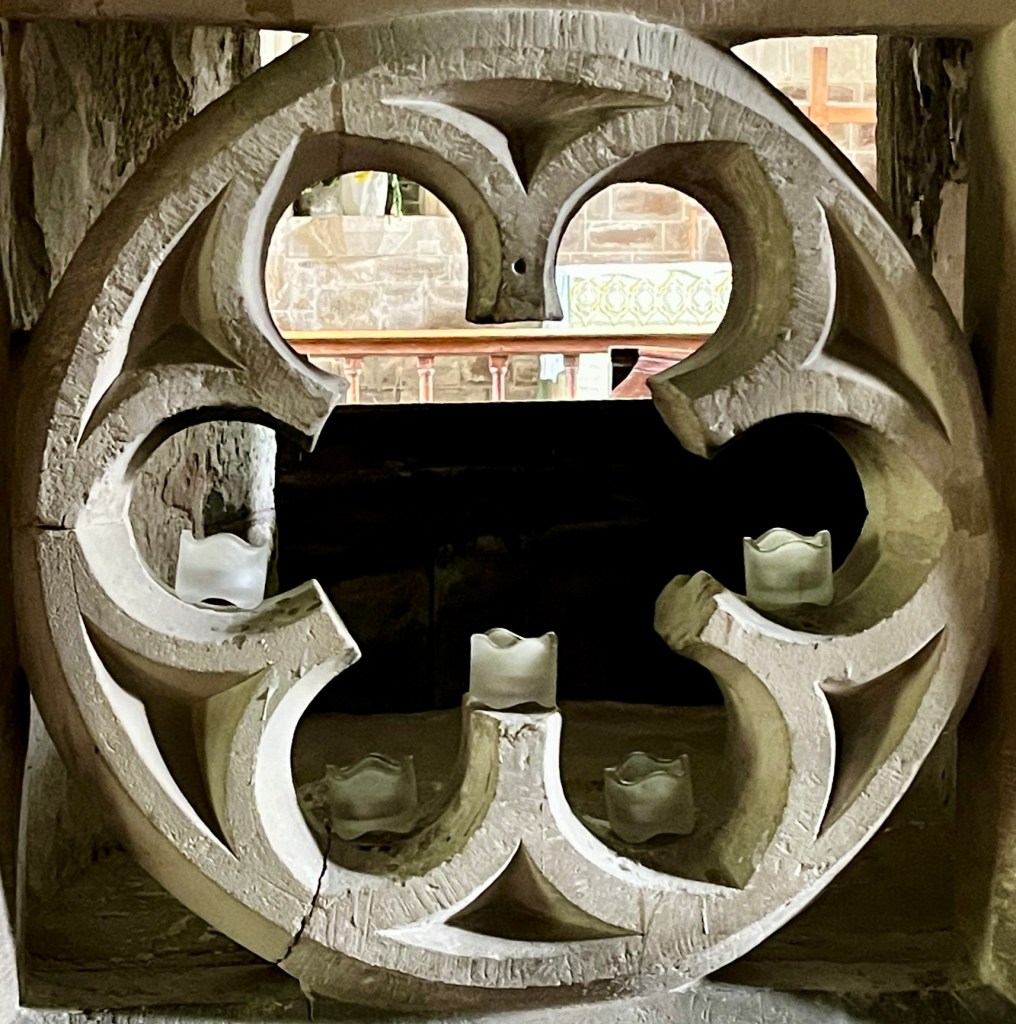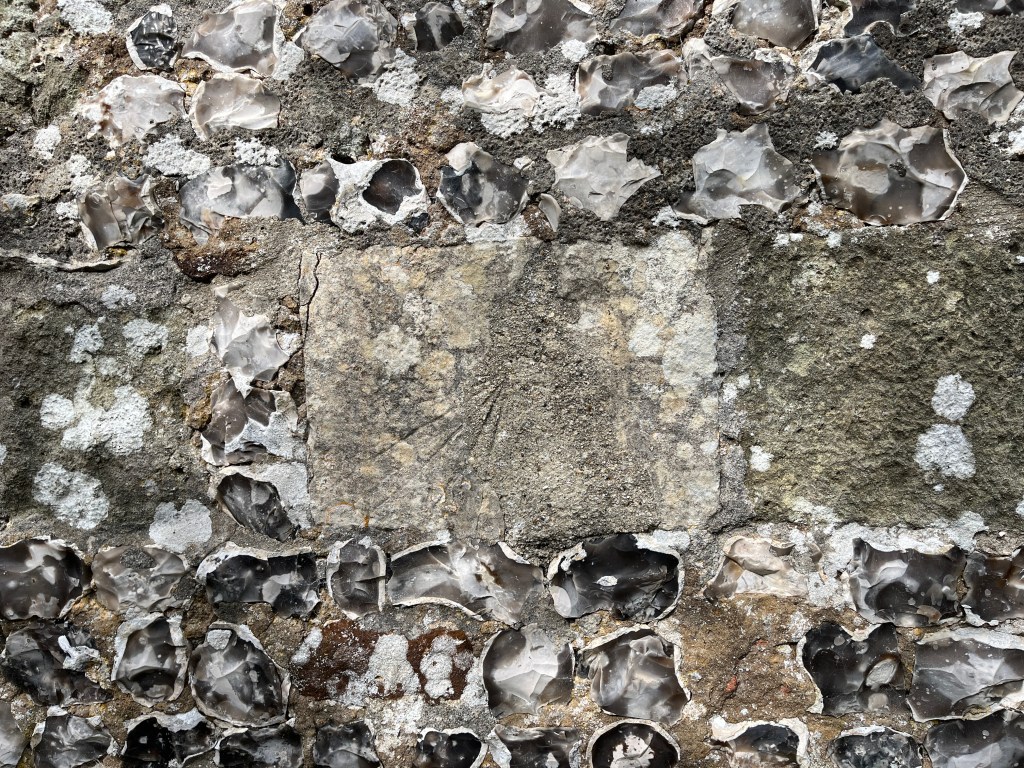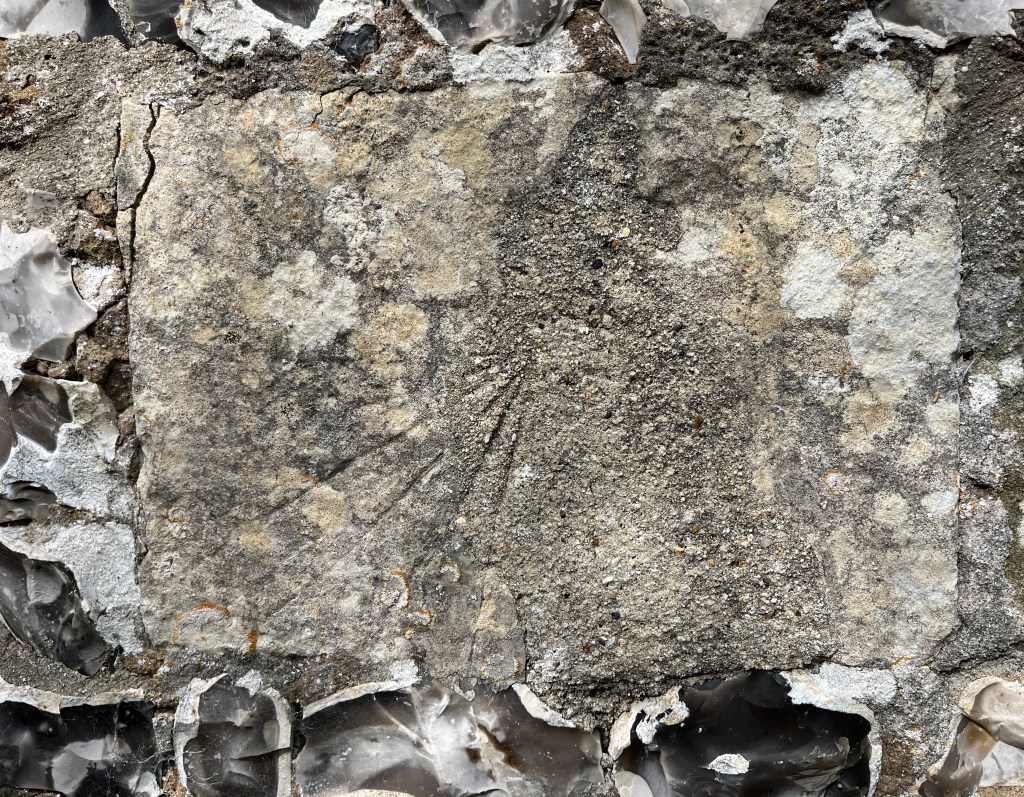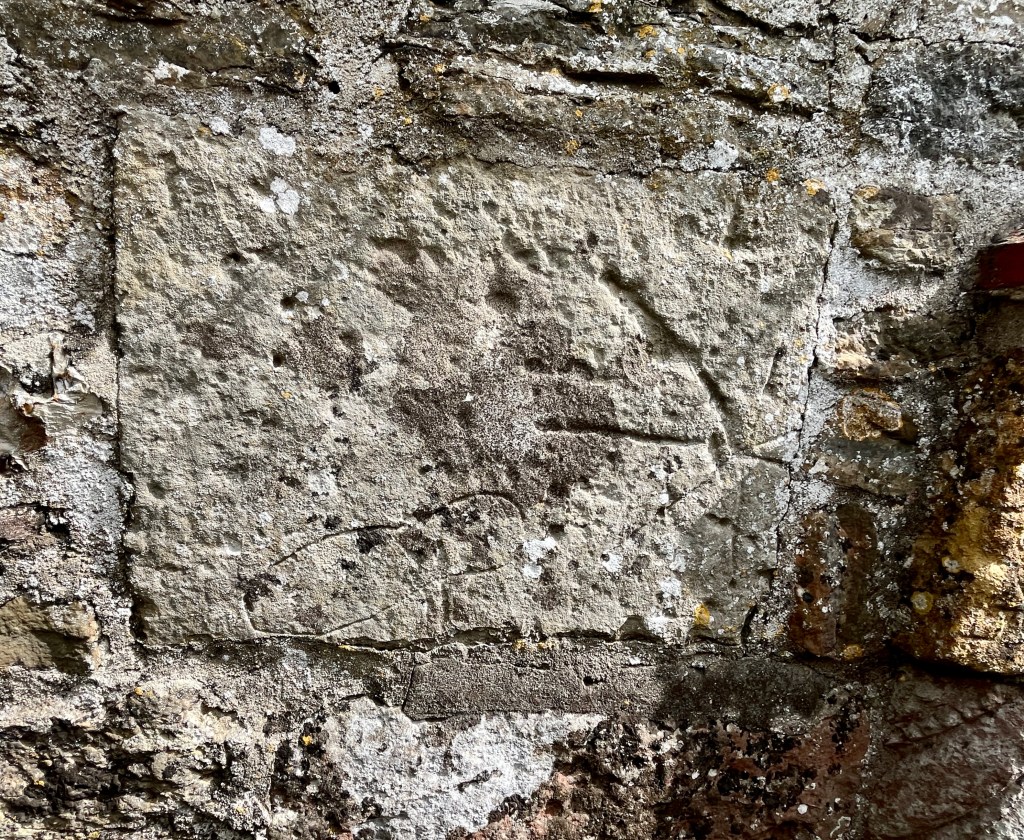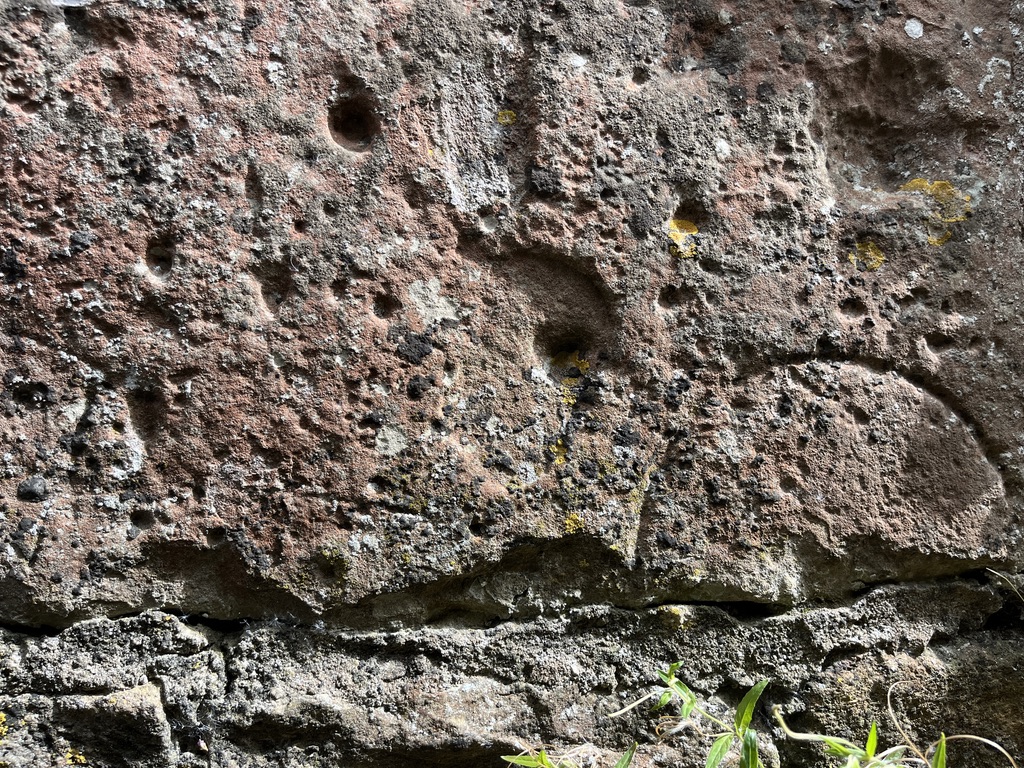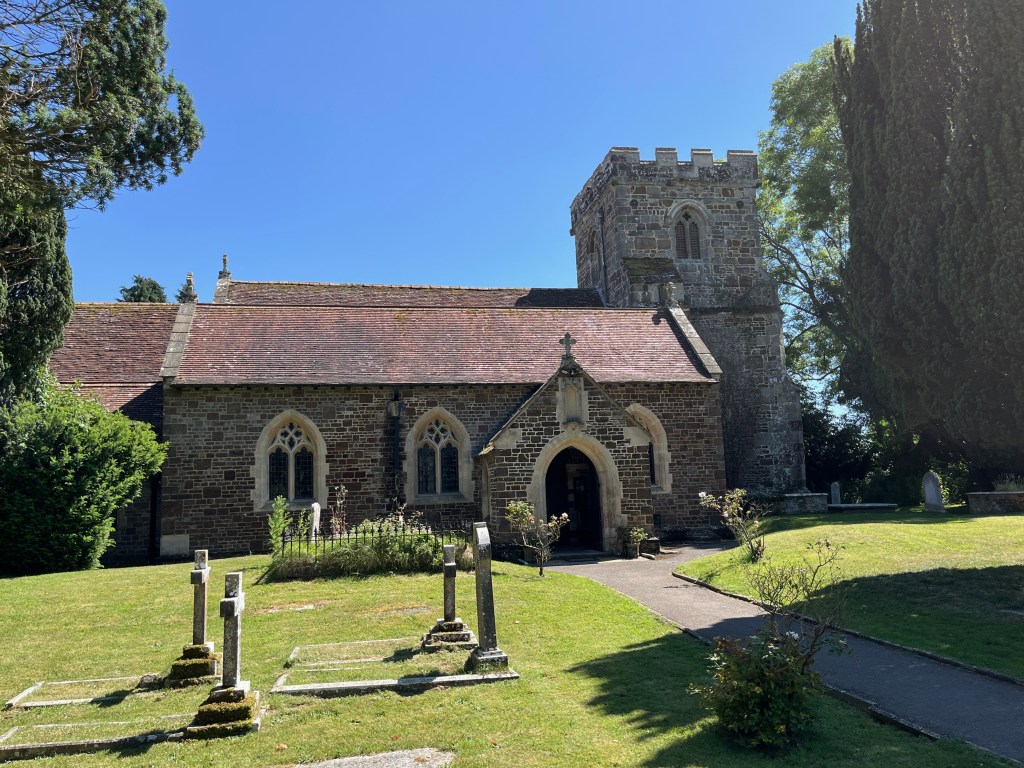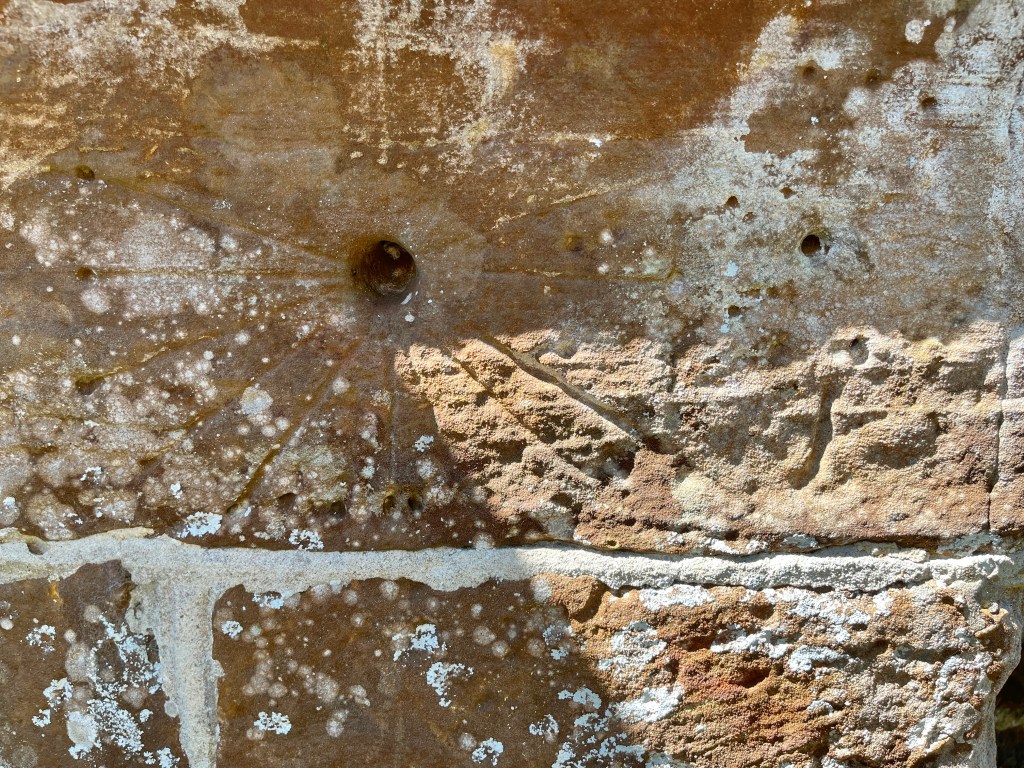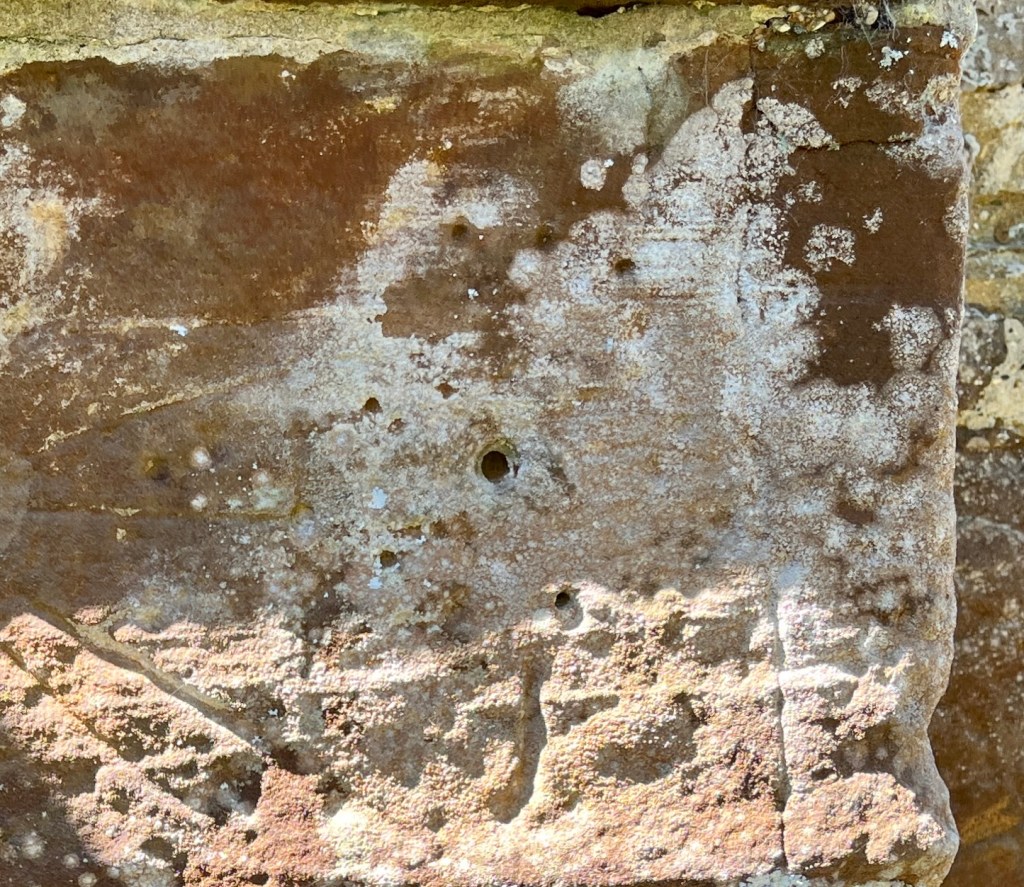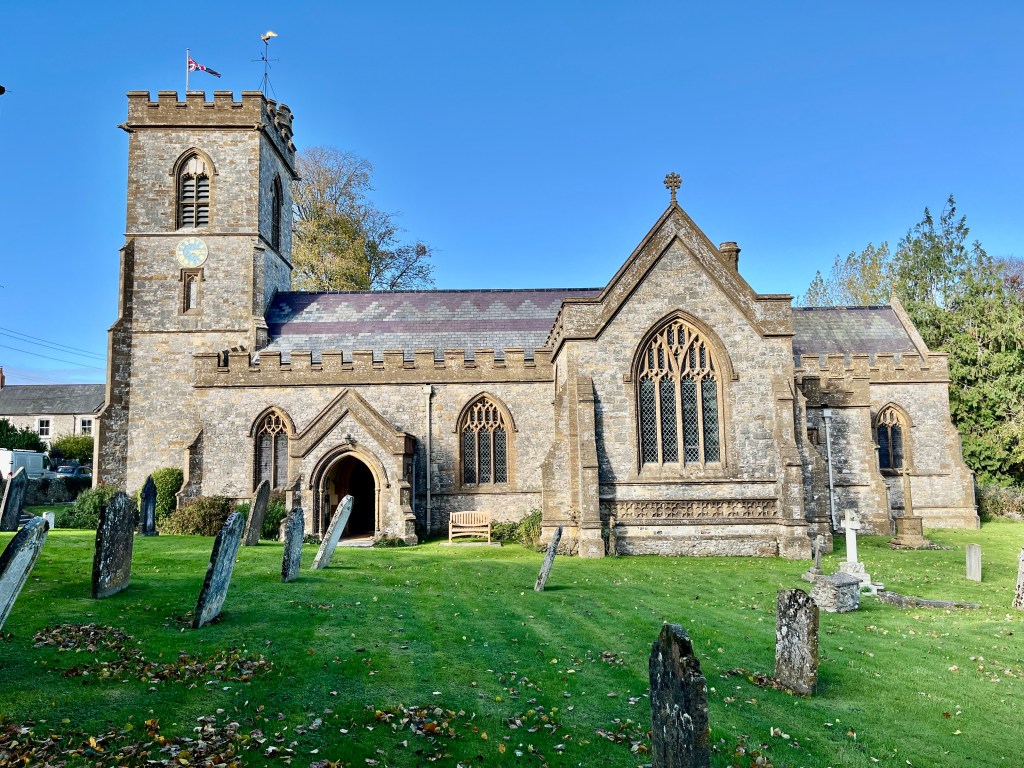
ST MARY . THORNCOMBE . DORSET
GRADE II ✣ Original dedication 1239; rebuilt 1867 perp. Dial re-sited. ‘The best brasses in Dorset’ (Pev.): full length, of Sir Thomas and Dame Joan Brook. A large church for a small village. Interesting (and at times somewhat lurid) history (see BLB). 6 miles SE of Chard. 50.8263 / 50°49’34″N . -2.8873 / 2°53’14″W . ST375033
LOCATION
During the rebuild it looks as if care was taken to re-site the dial more or less intact. However, an obscure place was chosen, low down on N wall of the aisle, semi-hidden by a buttress. The dial is weathered and faint – even with the field notes of GLP, it took me a while to find it.

DIAL
The dial has a near-complete circumference line (damaged at the top) and 4 radials, of which only one is readily visible. Its 90° reorientation and its secluded position renders it useless for its purpose.



Rotating a B&W image of the dial-stone 90° clockwise gives a sense of how – in its original position – it would have acted as a marker for the progress of the day, observance times etc. In its current location it serves merely as a curiosity for the completest dial-chaser.

GSS Category: Relocated dial; Rotated dial 90°; North-facing dial
Credits: Gordon Le Pard (GLP) for his exhaustive research of the scratch dials of Dorset



